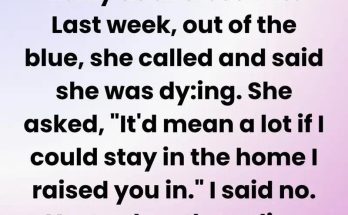A seemingly peaceful fishing trip turned into a public outcry after chilling photos emerged online showing a man and child standing at the edge of one of the world’s most dangerous crocodile-infested rivers. The images have prompted renewed warnings and raised questions about safety, responsibility, and just how quickly a moment of joy can turn into tragedy.
The photos, originally posted to social media by concerned bystander Karen Beckham, show an unidentified man and young child fishing together at Cahills Crossing, a notorious river in Kakadu National Park in Australia’s Northern Territory.
On the surface, the photos look like a father and child bonding during a quiet afternoon by the water. But to those familiar with the region, the sight is anything but heartwarming — it’s horrifying.
The pair were standing just inches from the river’s edge at a location known for aggressive, fast-moving saltwater crocodiles, some of which have been measured at over 20 feet long. It didn’t take long for the images to go viral.

Social Media Reacts: “Sick to My Stomach”
The photo ignited a firestorm of concern across social media platforms. Users were quick to express their alarm, with one commenter writing, “And the parent of the year award goes to? This dude.” Another added, “This makes me sick to my stomach,” while a third questioned, “What is wrong with people?”
Though a few downplayed the situation, suggesting it “doesn’t look that bad,” experts and wildlife officials strongly disagreed. What many don’t realize is just how dangerous Cahills Crossing truly is — and how little warning you may get before disaster strikes.
A Crocodile Hotspot With a Fatal History
Cahills Crossing may look like a tranquil stream on a sunny day, but beneath the surface, it’s one of Australia’s most treacherous bodies of water. The area is marked with large warning signs, one of which bluntly reads: “A fatal crocodile attack occurred here.”
Despite the clear signage and a long history of deadly encounters, the spot remains a popular fishing location, particularly among tourists unaware of the real risks.
According to Matt Cornish, co-founder of the Community Representation of Crocodiles, complacency is one of the greatest dangers.
“Cahills Crossing is considered to be a high-risk crocodile location where people need to be extremely vigilant,” Cornish said in a statement to Yahoo News. “We have had crocodile fatalities there over the last couple of decades.”
Crocodiles Can Strike in the Blink of an Eye

While crocodile warnings may sound exaggerated to those unfamiliar with the creatures, wildlife experts say the danger is very real — and incredibly fast.
Mick Bender, a licensed reptile handler and educator from Wildlife Unleashed, explained that visitors should stay at least five meters (16.5 feet) away from the water’s edge at all times.
Why five meters?
Because that’s based on the strike range of the largest recorded saltwater crocodile, which was over 23 feet in length. Bender explains:
“Their strike range is half their body length — from the tip of their nose to the base of their tail — and they can launch themselves with terrifying speed. It happens in the blink of an eye.”
And that’s just from the water. On land, crocodiles can also move faster than many people realize, especially in short bursts. A child standing just a few feet from the water, or even a distracted adult, may not have enough time to react.
Fishing, Fun, and Fatal Risks
The issue with locations like Cahills Crossing is that they combine recreation with real danger. Fishing is common in the area, and the river is often shallow enough to appear deceptively safe.
But that’s exactly the problem.
Fishermen sometimes clean or hold their catch near the water’s edge — unknowingly attracting crocodiles that associate the smell and movement with food.
This is particularly risky for children, who are smaller and more vulnerable. And unlike sharks, which often swim away from people, crocodiles are ambush predators. They wait. They watch. And when they strike, they don’t miss.
Tommy Hayes, a professional crocodile wrangler and wildlife responder, reviewed the viral images and had this to say:
“I’m actually glad people are reacting strongly. It means the message is getting through — that crocodiles aren’t something you can just shrug off. These animals are incredibly powerful, and it only takes one second of carelessness.”
A Wake-Up Call for Parents and Travelers
Though this incident happened in Australia, it offers an important reminder for families and travelers around the world: nature is not a theme park. Not every river is safe. Not every picturesque scene is without risk.
For seniors, grandparents, and parents traveling with children, understanding the local wildlife and safety guidelines is critical — whether you’re fishing, hiking, swimming, or simply sightseeing.
Even in U.S. regions like Florida and Louisiana, where alligators are common, similar rules apply. Never stand or let children play close to the water’s edge in known reptile habitats. And never assume that just because others are doing it, it must be safe.
Why People Still Take the Risk
So why, despite the warnings, do people still stand near rivers like Cahills Crossing?
The answer, experts say, is a combination of tourist naivety, overconfidence, and the human tendency to underestimate slow-moving dangers.
In many cases, visitors simply don’t read the signs. Others assume that if the water is clear and calm, there’s no immediate threat. And some believe that “it won’t happen to me.”
Unfortunately, that’s exactly the kind of thinking that has led to past tragedies — both in Australia and elsewhere.
Education Is the Best Prevention
The viral photos may be disturbing, but experts believe they’re serving a purpose — sparking conversation and reminding people what’s really at stake.
Matt Cornish put it plainly:
“We need people to understand that these environments are not safe playgrounds. If it’s marked as high-risk, treat it that way. Don’t take chances.”
And if you’re ever unsure? Stay back. Ask a local guide. Watch from a distance. No photo or fishing trip is worth the risk of a fatal mistake.
A Lesson for Us All
In a world where we’re constantly seeking beauty, adventure, and Instagram-worthy memories, it’s easy to forget that nature has teeth — sometimes literally.
As we age, many of us begin to understand the value of caution, of reading signs, of understanding that not every moment needs to be thrilling to be meaningful. It’s a lesson worth passing on to our children and grandchildren.
Let this story be a gentle but firm reminder: respect the wild. Whether you’re fishing in Australia, kayaking in the Everglades, or hiking near a bear trail in Montana — the rules are there for a reason.
And sometimes, the safest choice you can make is the one where you simply step back.



